As of the end of 2021, and one year on in Apple’s Mac transition to Apple Silicon, we are now only left with 3 final Macs that are still sold new and still running on Intel. By sales volume, most of the Macs are now running on Apple Silicon. Most popular Macs are the MacBook Air and the MacBook Pro, while the starter 24” iMac is a solid all-in-one desktop solution. However, the final 3 Macs might be the most powerful statement by Apple to show that it had made the right choice to go to their own solution.
In this article, we will explore what’s left that Apple needs to replace, what Apple needs to do and what kind of performance that we can expect from these final Macs.
Executive Summary:
- Since the release of the M1 Pro and M1 Max SOCs on the MacBook Pro, there are speculation on what the entire line up to Mac Pro will be
- Based on leaked sources, the M1 Max will be Duo die and Quad die versions of the M1 chip
- We speculate that Apple will use Multi-chip modules for the expanded version of the M1 Max
- M1 Max Duo should able to support up to 128 GB of RAM, have double the cores of the M1 Max, which means to say 20 compute cores, 32 cores for the Neural Engine and 64 cores for graphics
- We believe that the M1 Max Duo would be used in the larger 27-inch iMac replacement and potentially the Mac Pro
- M1 Max Quad will be an interesting chip since Apple needs to figure out how to put 4 M1 Max dies on a single module. Signs put to multi chip module as Apple still need to support the massive amount of RAM that is present in the current Mac Pro.
- There are discovery on the M1 Max that they have a chip to chip interconnect that is not show in the Apple event. This add speculation about having a multi-chip module.
- Update: Apple unveiled the M1 Ultra on March 2022, which is basically two M1 Max chip connected via a bridge called Ultra Fusion.
What they are replacing
As it was mentioned before, there’s only 3 Macs remaining in Apple’s lineup that still run Intel. The higher end space grey Mac Mini (last updated in 2018!!), the larger 27” iMac (last updated in 2020) and the all powerful workstation level Mac Pro (last updated in 2019, but with new graphic cards in 2021).
The 2018 space grey Mac Mini runs on an 8th generation Core i5 with 256GB SDD and 8GB of RAM. Upgrade options include an i7, 1TB SSD and 64GB of RAM, all has to be done during order since everything is soldered down. It was people who needed a beefier Mac Mini and quite popular with people who needed a cheap Mac server or part of a render farm.
The 2020 27” iMac is the last Intel iMac that Apple introduced and the specs are quite impressive: up to 10th Gen Core i9 chip, 128 GB of RAM, a Radeon Pro graphic cards, 8 TB SSD, 10GB ethernet, optional $500 Nano texture to reduce glare. It is truly Intel’s last hurrah to court Apple into its fold, but alas, the writing was on the wall for a long while before that.
The Mac Pro, even when introduced in 2019, still has very impressive spec even by today’s standard: 28-core Xeon processor. 8 TB internal storage and option to add drive bays. 1.5 TB (!!) RAM is possible. Dual 10 GB ethernet with lights out management support so you can remotely control the Mac Pro through the network, even when it’s off. Expandability is the name of the game with the only Mac that has actual PCI-Express slots, the Mac is built to be used and abused for years to come. Of course, the pricing is not for the faint in heart. For consumers, the $5,000 entry price is a very high barrier. But with customizable options that allows you to spec your Mac Pro all the way to over $50,000, it’s for businesses who are more concerned about getting things done in the shortest amount of time so they can get paid as soon as possible instead of cost-conscious users.
So basically, all the final Macs that yet to be replaced might not be a volume seller, but they are important enough in the high-end performance market that they simply cannot be ignored. Furthermore, Apple has a reputation to keep and it need to show the world that they made the right decision.
What we know
So here is what we know. Apple at the very bare minimum, has to be competitive with current and near future offerings from Intel and AMD. It has to, at the bare minimum, to have the same amount of RAM in every machine that is being replaced. There might be a few customers that need to plow in $25,000 for 1.5 TB of RAM, but if a customer checks that option, most likely that the customer has workflows that require such a huge amount of RAM.
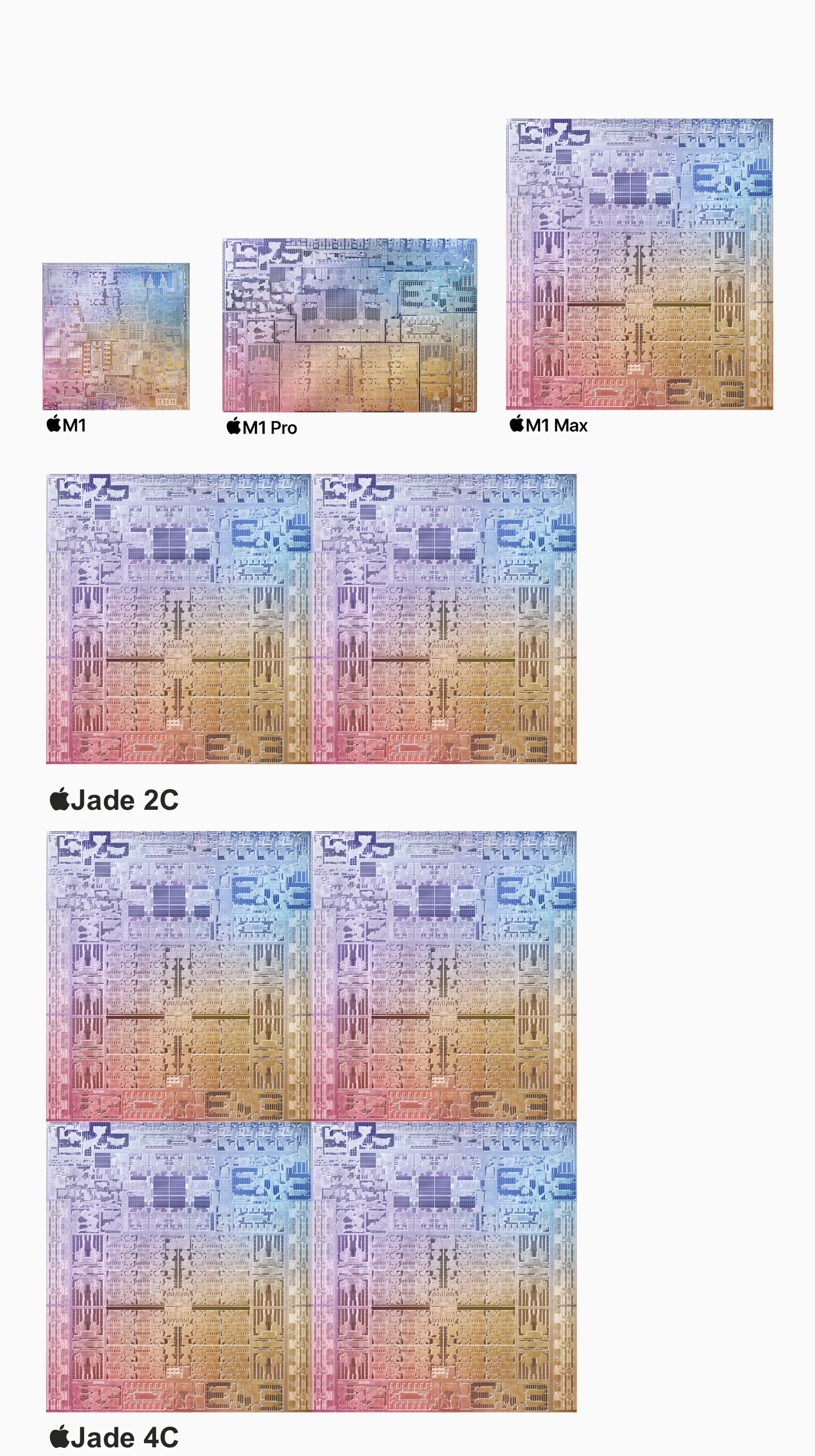
Now, publicly, Apple has mentioned that Apple Silicon will consist of a family of processors that powers from the consumer level MacBook Air to the all powerful Mac Pro. From design leaks that have flowed around the internet, the current generation has a family of processors code name Jade. There will basically be two versions of the same processor, one for consumers and another for professionals. The professional will have a few versions of the same processor: Jade-Chop (a cut-off version of full sized processor), the base Jade, Jade-2C (which is a dual die version of the base jade), and Jade-4C (which is basically 4-die version of the base in one package).
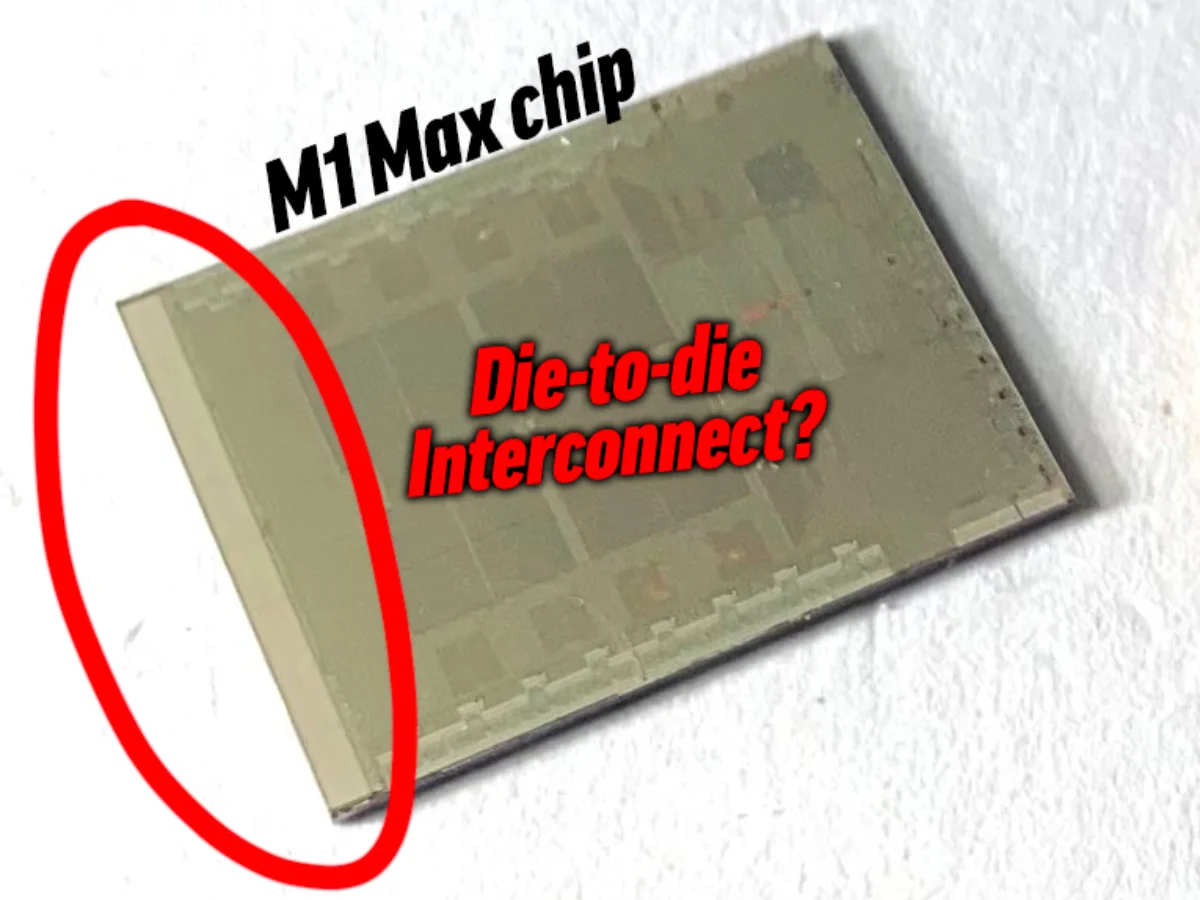
So far the rumors have been confirmed. The consumer version is what we now know as M1 processor, while the Jade-Chop is the M1 Pro which is a cut version of the Jade processor, which is marketed as M1 Max. So, since the M1 Max is now in the wild, there are many more people that have a closer look of the chip and they notice that at the bottom of the M1 Max has some sort of interconnect circuitry that is not shown in Apple’s own marketing materials. Experts speculate that these are the potential interconnects for Apple to facilitate chip-to-chip communications. In other words, you can put several copies of the M1 chip on a single package and they will act like a single large chip.
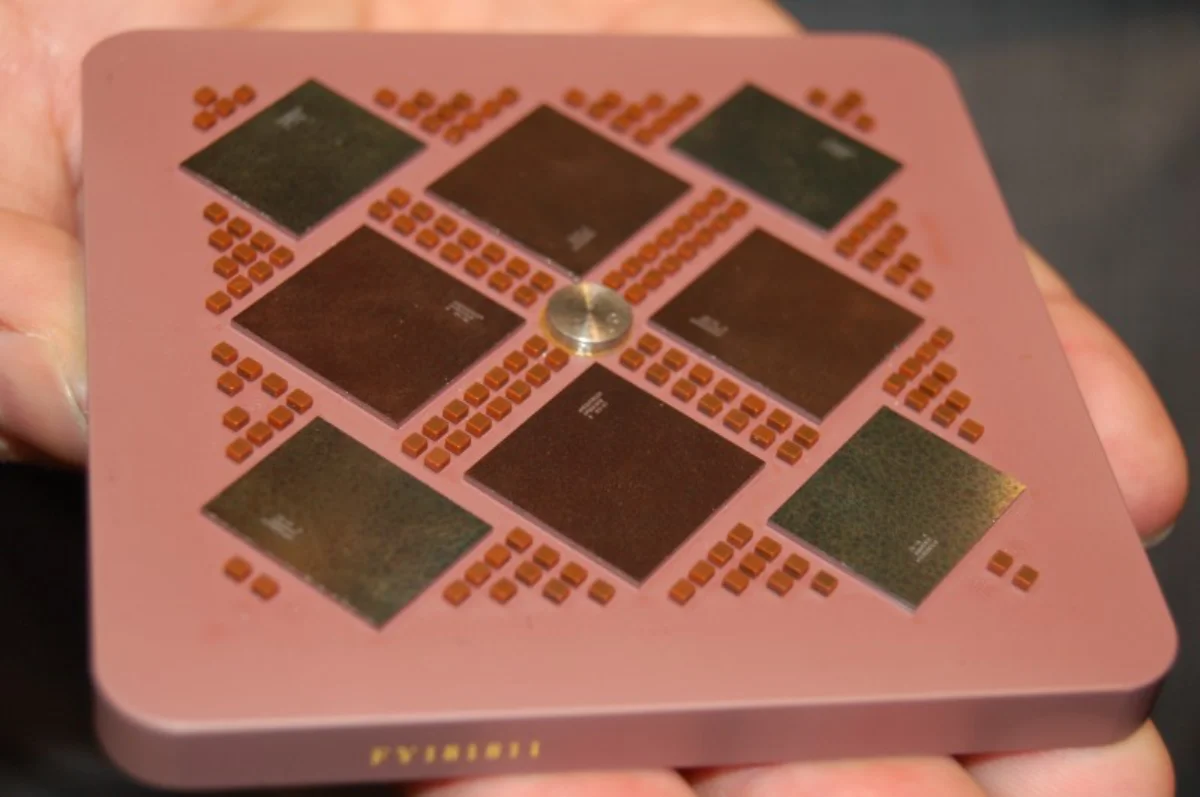
The idea of having multiple chip in a single package is not a new idea. In fact it is a very old idea. IBM had such an arrangement for their System 360 way back in the 1970s. IBM reused the same concept in their POWER5 systems which involve having four processor dies in the same package. Most recently, AMD in their Ryzen “Threadripper” processor, put eight processor dies in the same package. The result is a chip that has around 64 cores and can process 128 threads at the same time.
Macs Prediction
So from the roadmap that has been leaked on the internet and information that we found out from production chips on the market, we can now make an educated guess on the rest of the Apple line up. We will go through each model to see how they will be configured.
Since using Intel chips, Apple has been opting for mobile versions of Intel chips even on their desktop Mac. There are a few reasons for this, but the first one is design. They can make everything sleek at the expense of thermal management and user expandability. With the advent of the Apple Silicon, Apple solved thermal management and Apple argued that most of the target customers are not enthusiasts that usually open up and upgrade their Macs. That being said, the highest spec desktop Mac does have some sort of user replaceable parts like the memory hatch in the 27” iMac and full expandability in the Mac Pro. We suspect the trend will carry on in the full refresh of the final three Macs.
Mac Mini: M1 Pro / M1 Max with 4 USB-C + HDMI ports, 10 GB Ethernet optional, up to 64 GB LPDDR5 RAM, 8 TB internal storage
For the Mac Mini, the answer is obvious: the new Mac Mini will retain the same form factor, albeit in a rumored new chassis design, but will feature the M1 Pro and M1 Max that is available in the MacBook Pro. Teardown of the current M1 Mac Mini shows how tiny the circuit board is, and the teardown of the new MacBook Pro shows how much real estate the M1 Max has freed up. With better thermal of desktop, this Mac Mini will be one powerful small form factor computer, which can finally rival desktop graphic cards.

iMac: M1 Max / M1 Max Duo. User replaceable RAM slot might be possible. Up to 256 GB DDR5 RAM. 8 TB internal storage. SD slot. Ethernet jack on the power cable.
For the larger 27” iMac, Apple has a few choices to make. First and foremost, the 27” iMac has to be the most powerful consumer desktop Apple makes, short of the halo Mac Pro. Now, while the current iMac is quite powerful, problems include thermal management and graphic cards that are not that competitive against Nvidia offerings. Apple has not only had to fight off the RTX 3090 that is on the market now, but also whatever near term updates from Nvidia, namely, the RTX 40-series that is expected to be released sometime in 2022. So that is why the new 27” iMac could be the first Mac with the new M1 Max Duo, having two M1 Max dies in a single package.
Mac Pro: Modular CPU, RAM and storage kit. M1 Max Duo and M1 Max Quad. 12 to 16 DDR5 RAM slots means 4 to 6 TB of RAM. 8 TB internal storage with option for 3.5” mounts. PCI-Express slots for expanability.
Now comes the big kahuna: the Mac Pro. It has a large shoes to fill: 28-core Xeon processor, 12 memory slots will allow it to put 1.5 TB ECC RAM, up to 4 graphic chips using the MPX module, afterburner card for ProRes processing. If the rumors are to be believed, the Mac Pro will feature a 4 M1 Max die in a single package, something like the M1 Max Quad. This will check all the requirement boxes in the current Mac Pro and outperform the current Mac Pro by a wide margin. As for RAM choices, Apple certainly would go to the full size DDR5 route instead of the laptop version LPDDR5. As memory manufacturers are going for 32GB at introduction and even aiming for 128GB or even 512GB sticks down the line, a 2 TB to 8 TB RAM on a Mac Pro is within the realm of possibility. The question will switch from can the Mac Pro handle it to what can we throw at the Mac Pro?
Performance Prediction
We already see how the next new Macs is configured, now we have to see how it will perform.
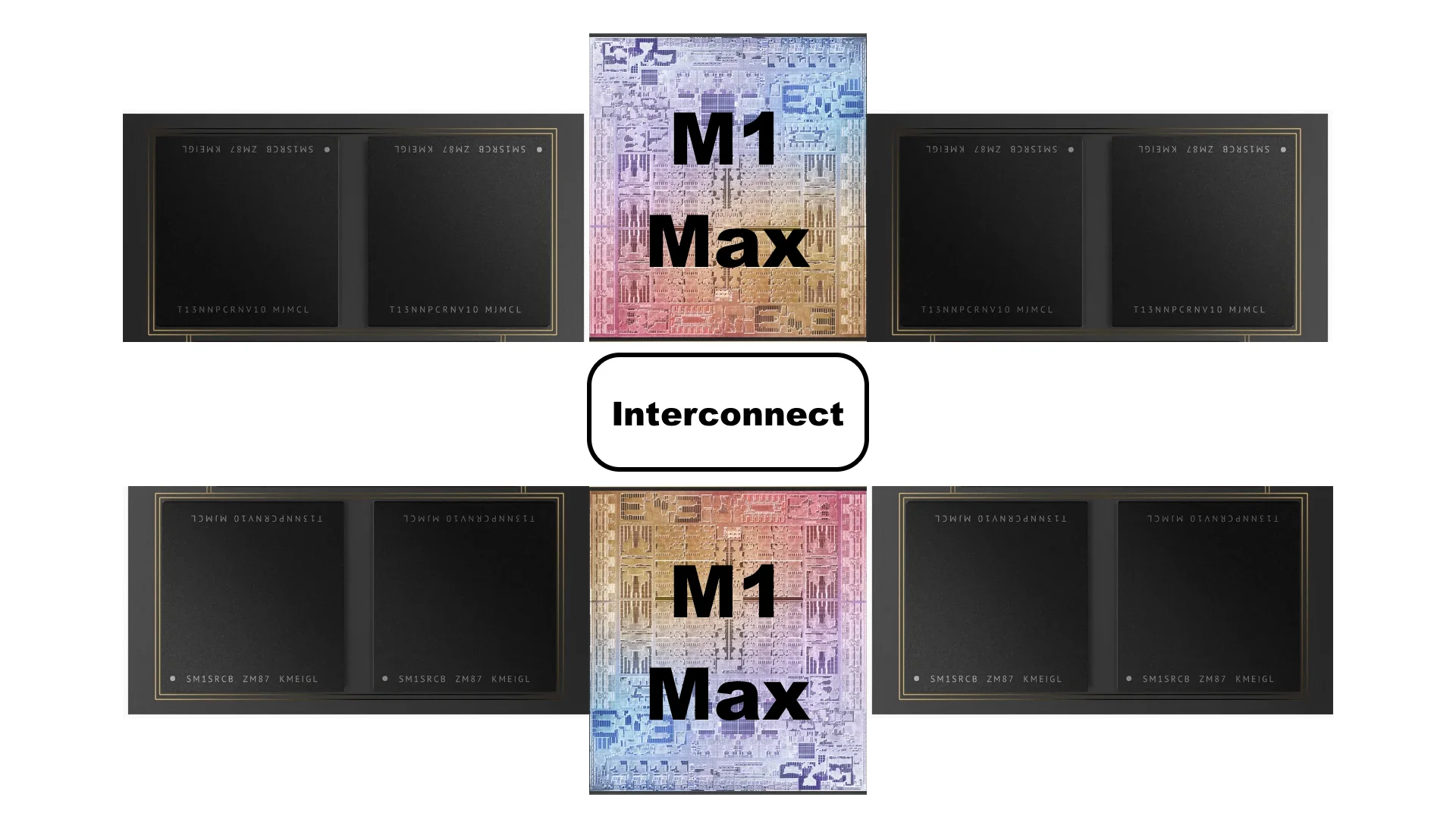
The M1 Max Duo will have two M1 Max Duo connected together via an interconnect link at the bottom of the chip. Together they will have 20 compute cores of which 16 are high performance cores while the rest are efficiency cores. It will have 32 neural network cores and will have 64 graphic cores, which should make it more powerful than a RTX 3090 card. TDP, calculated from MacBook Pro puts it at 60 W but Apple could theoretically pump it higher for more performance.

The M1 Max Quad will be an Apple showcase of electrical and computer engineering mastery when they put 4 M1 Max chips in a single package. The end result is that it will have a whopping 40 compute cores, 64 neural cores and an insane 128 graphic cores in a single package. This will put the M1 Max Quad at Xeon level multicore performance while having higher single core performance than a Ryzen “ThreadRipper” 3990X. The 128 graphic cores will be more performant than having dual RTX 3090 in SLI mode and with unified memory, it will certainly have the most RAM in any graphic cards on the market.
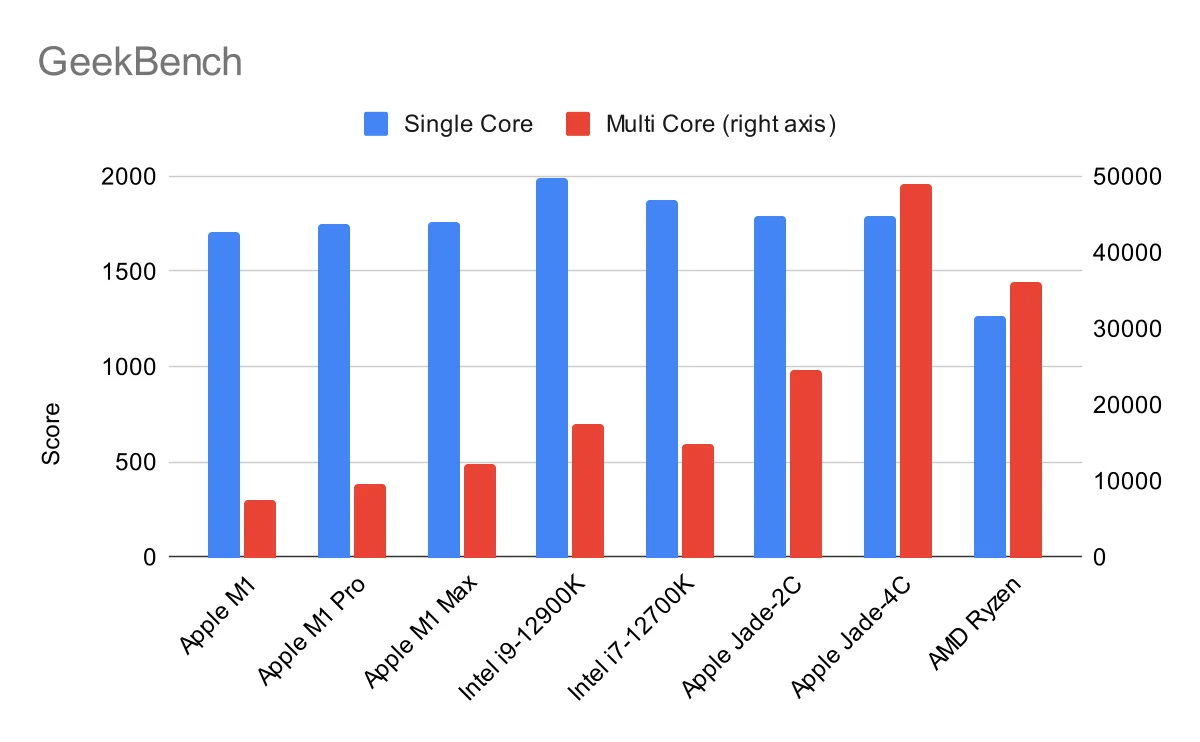

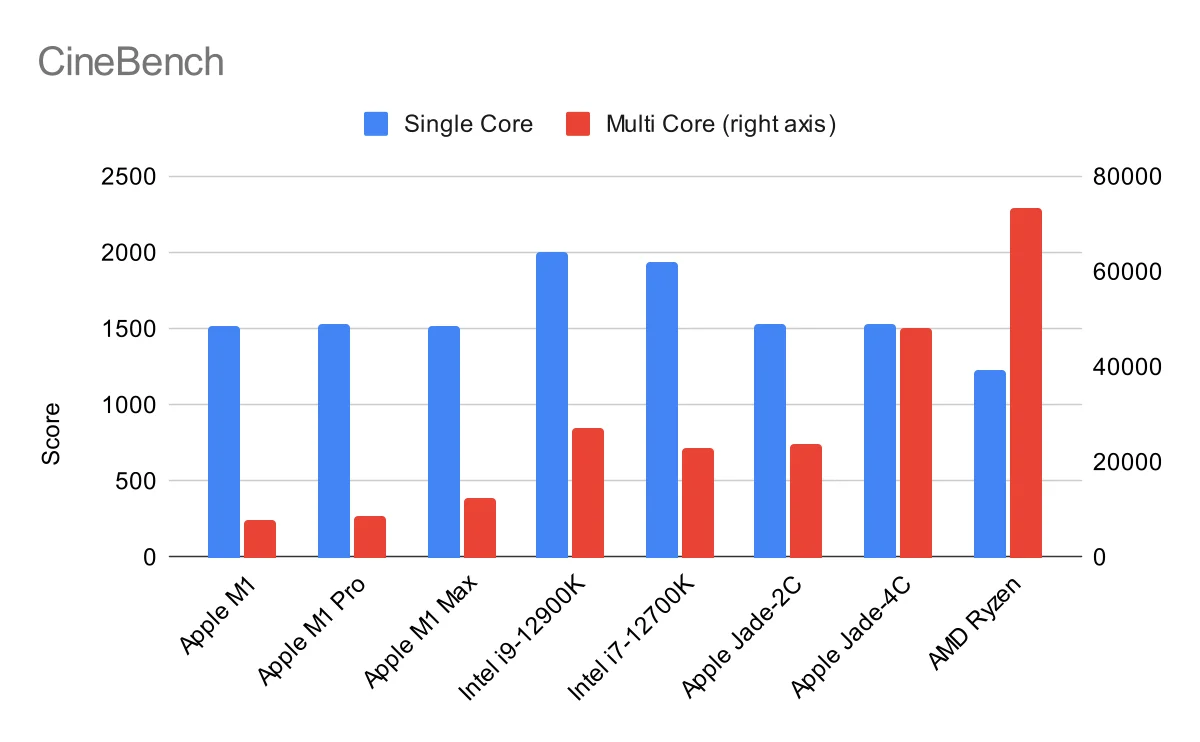
In the M1 Max, there are two Media Engine that allows the MacBook Pro to handle up to 7 8K ProRes streams or around 30 4K ProRes streams. Now, imagine having 4 times of the Media Engines which allows the Mac Pro to do 28 8K ProRes streams. You will have a hard time to look for anything that can remotely do that. With 64 neural cores in the Neural Engine developers can take advantage of doing more complex ML tasks in less time like group facial and object recognition, pattern detection and such.
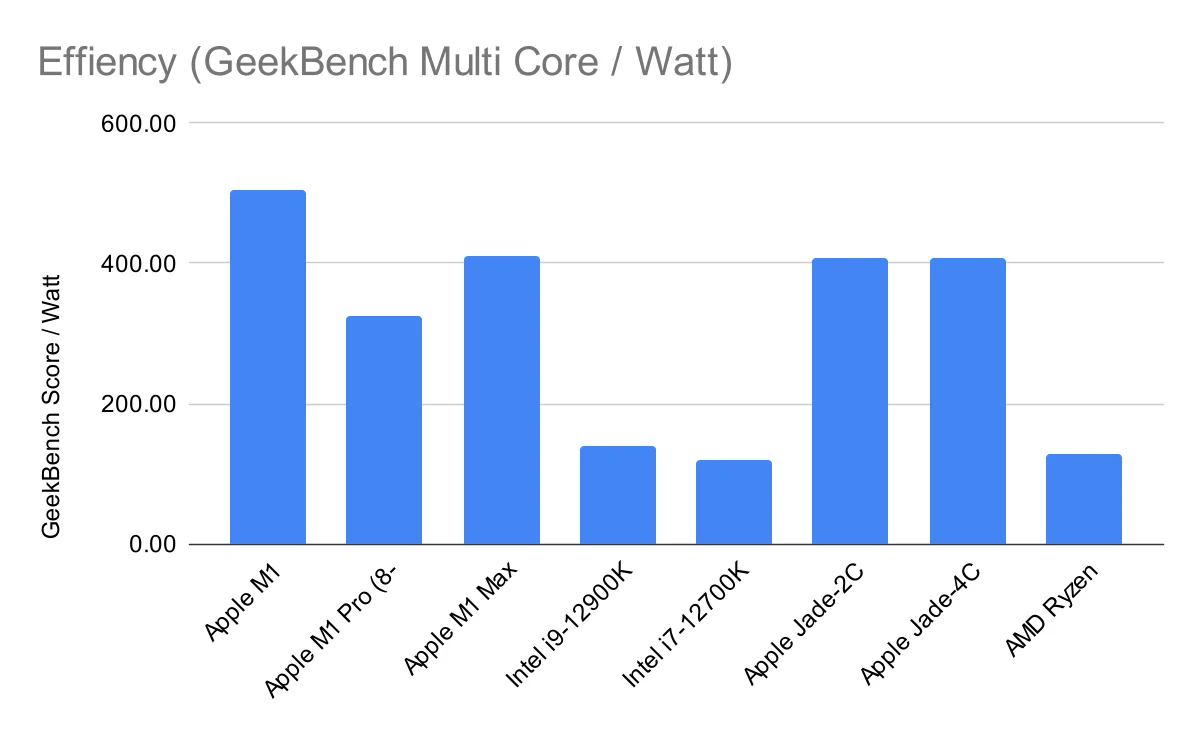
The current Mac Pro has thermals to handle a hot 205W Xeon W3275M processor. If Apple decided to follow the MacBook Pro performance envelope at 30W per die, the total TDP of the M1 Max Quad will be at 120W, which means there is more room for expansion. Even when each of the die TDP is bumped up to 45W which theoricall could give an extra 15% to 20% boost, the total TDP for the entire chip would still be below 200W, which mind you include graphic performance.
Conclusion
When Apple went away from Intel to their own solution, it hoped to solve two major problems: vertical integration so they can control every aspect of their product, so in the end it will be a unique product that competitors can’t match and finally, to showcase that going their own way is ultimately the better solution. In their mind, they prefer not to measure performance by benchmark results but the productivity on how they do things: how many streams of 8K ProRes they can handle, how faster it is to export in Final Cut Pro, how faster it is to detect text in a picture using Live Text and how faster to render the picture using computational photography.

This Apple Silicon is no different. On one hand they do need to show the general purpose cores are performant, but on the other hand, their have to show that they they have no equal in performing tasks to which what they think most of the users will do: video editing, photo touch-ups, making presentation and emails, some ML work and the occasional games in Apple Arcade.
And since Apple is always a trendsetter in many fronts, in the future we might move from general purpose computing like the current Intel X86 offering to something of a hybrid like the Apple Silicon solution: a few general purpose cores augmented with graphic and neural network cores binded by an I/O interface. In a way, other merchants have been doing this in one way or another. Integrated graphics have been in laptop chips for a decade now. Intel has introduced hybrid cores in the latest 12th generation Core chips But none have that same integration like Apple did. At least not yet.
Plug
Support this free website by visiting my Amazon affiliate links. Any purchase you make will give me a cut without any extra cost to you
- Mac Mini M1 - Amazon USA / Amazon UK
- iMac 24" M1 - Amazon USA / Amazon UK
- Mac Studio - Amazon USA
- MacBook Air M1 - Amazon USA / Amazon UK
- MacBook Pro 13" M1 - Amazon USA / Amazon UK
- MacBook Pro 14" M1 Pro / M1 Max - Amazon USA / Amazon UK
- MacBook Pro 16" M1 Pro / M1 Max - Amazon USA / Amazon UK
- Accessories:-
- Wireless earphones / headphones:-
- AirPods - Amazon USA / Amazon UK
- AirPods Pro - Amazon USA / Amazon UK
- AirPods Max - Amazon USA / Amazon UK
- Buyer's Guide:-
